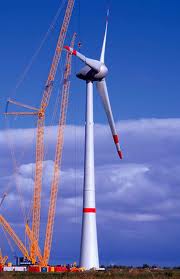To adapt the popular misquotation of Ralph Waldo Emerson – he didn’t actually say the world would beat a path to the door of the inventor of the better mousetrap, but it’s such an optimistic message to entrepreneurs so why waste it? – will the green energy industry soon be looking up the route to Case Western Reserve University in Cleveland, Ohio?
Researcher Marcio Loos may just have hit upon the superior wind turbine, capable of capturing more renewable energy per inch of spinning blades than materials currently used. And he’s done it by applying nanotechnology.
The latest generation of wind turbines, some as tall as 150 m, do a very good job of converting moving air into clean energy – 7.5 MW in this case. But they are still mere pinpricks on the renewable energy landscape – whatever the NIMBYs think of them – meeting a modest part of our energy requirements.
Either we erect an awful lot more of them, in the face of fierce local resistance, or they need to be bigger yet , to capture more wind. But bigger, heavier blades in existing materials will affect the stability of the turbine, and don’t necessarily convert into more energy produced. Lighter, stiffer blades would make far more sense.
A paper (and video) published by Loos and colleagues notes that to achieve the projected expansion in wind power, stronger and lighter materials with higher strength to mass ratios could enable larger rotors to be cost-effective.
Marcio Loos took to his lab in Case Western’s Department of Macromolecular Science and Engineering on weekends and may have come up with an answer: he has built the world’s first polyurethane blade reinforced with carbon nanotubes. His prototype 29-inch blade is significantly lighter and eight times tougher and more durable blade materials.
Working with fellow researchers, he found carbon nanotubes to be lighter per unit of volume than carbon fibre and aluminum, with more than 5 times the tensile strength of carbon fibre and more than 60 times that of aluminum.
His professor noted the “significant potential of carbon nanotube reinforced polyurethane systems for use in the next generation of wind turbine blades.”
Breakthrough technology, or just a promising research advance? We will follow follow with interest.
SOURCE Case Western Reserve University

